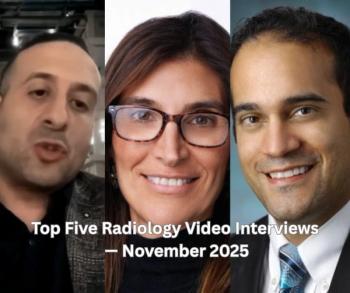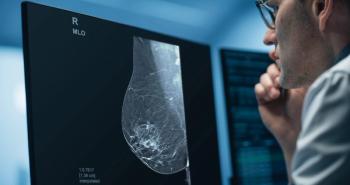
Effect of Radiologist-led Lectures on Breast Cancer Screening
Effect of anxiety about breast cancer screening after radiologist-led public lectures.
Public lectures about breast cancer screening decrease anxiety and improve knowledge in women, according to the
Researchers from New York and Colorado sought to determine the effect of direct, interactive education to lay audiences and on its impact on anxiety and understanding of breast cancer screening.
A total of 117 women, mean age 45, participated in the study, undergoing one-hour sessions of structured lectures and question-and-answer periods. Lay language and radiologic images were used to discuss disease background, screening guidelines, and areas of debate. The women then completed anonymous pre- and post-session questionnaires relaying their attitudes regarding screening and the impact of the sessions. Results are summarized descriptively. The scales ranged from 1 to 5, with 1 indicating no anxiety.
The results showed that the mean reported anxiety regarding screening was 2.5 ± 1.3. Anxiety was attributed to:
• Unknown results (56.4%)
• Anticipation of pain (21.8%)
• Known risk factors (14.5%)
• General uncertainty (12.7%)
• Waiting for results (9.1%)
• Possibility of more procedures (3.6%)
• Personal breast cancer history (3.6%)
Ninety-seven percent reported that immediate results would lower anxiety (78 % of those women indicated a 75% to 100% decrease in anxiety); 93% reported that radiologist consultation with images would lower anxiety (75.6% indicated a 75% to 100% decrease in anxiety). After the lecture, women reported (on a scale ranging from 1 to 5):
• Increased understanding of the topic (4.7 ± 0.6)
• Encouragement to screen (4.6 ± 0.7)
• Reduced anxiety (4.0 ± 1.1)
Ninety-seven percent to 100% provided correct responses to these questions: rationale for screening in the absence of family history, recall does not equate to cancer diagnosis, benefit of prior films, and continued importance of physical examination.
The researchers concluded that women who attended radiologist-provided direct public lectures reported decreased anxiety and improved knowledge regarding screening mammography. The resultant reduced anxiety (“harm”) and educational empowerment help enable informed decision making and may promote screening attendance.
Newsletter
Stay at the forefront of radiology with the Diagnostic Imaging newsletter, delivering the latest news, clinical insights, and imaging advancements for today’s radiologists.




























